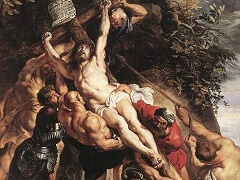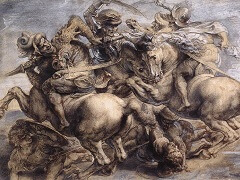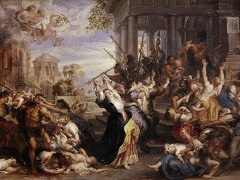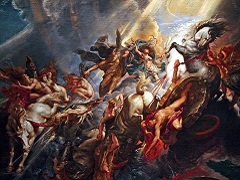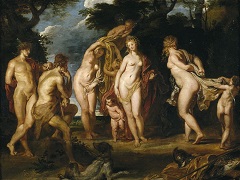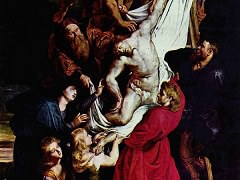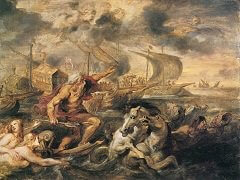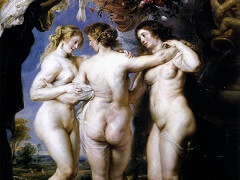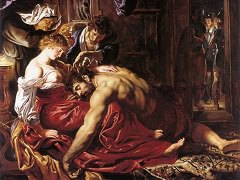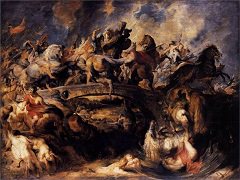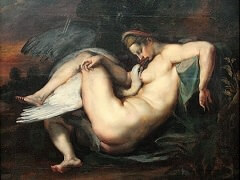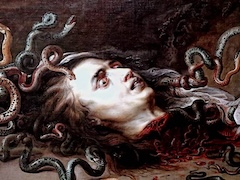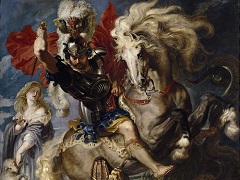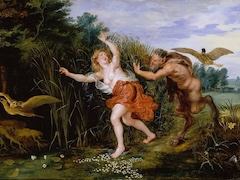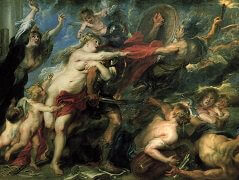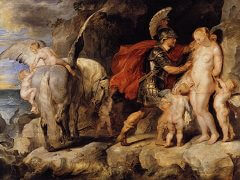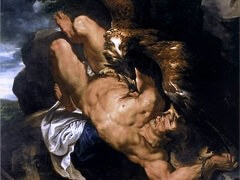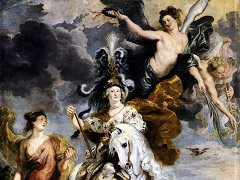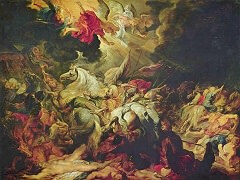Venus and Adonis, 1635 by Peter Paul Rubens
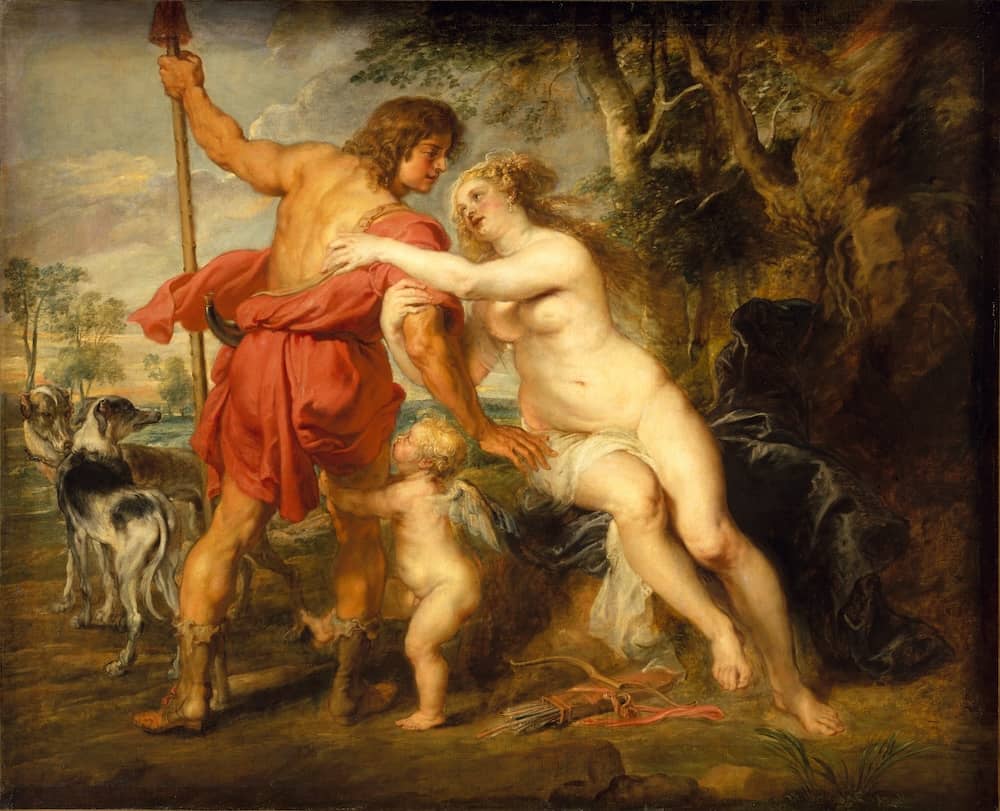
The story, which has attracted not only artists but poets, including William Shakespeare, tells that Adonis was the offspring of the incestuous union of King Cinyras of Paphos, in Cyprus, with his daughter Myrrha. His beauty was a byword. Venus conceived a helpless passion for him as a result of a chance graze she received from Cupid's arrow. One day while out hunting Adonis was slain by a wild boar, an accident Venus had always dreaded. Hearing his dying groans as she flew overhead in her chariot, she came down to aid him but was too late. In the place where the earth was stained with Adonis' blood, anemones sprouted.
Rubens depicts the scene when Adonis, spear in hand and with hunting dogs straining at the leash, is impatient to be off, while Venus imploringly tries to hold him back. But she pleads in vain. The painting is a variation on a picture painted by the master Rubens most revered: Titian. In Rubens' painting, Venus became the goddess by whom he himself now steered, Helena Fourment, while the fate of Adonis is implicit in the painting's elegiac tone. The nude Venus, gracefully seated, begs Adonis to remain, gently coaxing the garment from his shoulder. She casts a beseeching glance at him, her anxiety translated in the disorder of her blonde tresses. The tanned and muscular Adonis is clothed in a dazzling red tunic prefiguring the flower that he is to become; he is the incarnation of a Greek statue, his body standing out against the luminous sky that Venus has abandoned for love of him. At his feet, a little Cupid pleadingly clasps one of his thighs; the presence of the god of love and his quiver evokes the first cause of this tragic encounter. But for the duration of the moment, it is love rather than tragedy that prevails. Thus Rubens transforms the Metamorphoses themselves into a symbol of marital love.
Rubens was a devout Roman Catholic, yet his paintings while religious in theme were not influenced by the dogma of his era. He interjected a lusty exuberance into his work rather than staying strictly to his academic, traditional forms. This painting was completed near the end of his life at a time when he struggled with arthritis almost daily.

